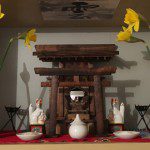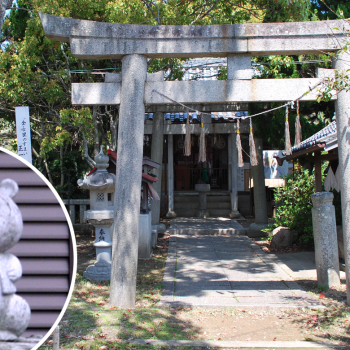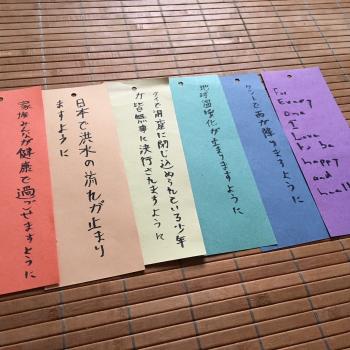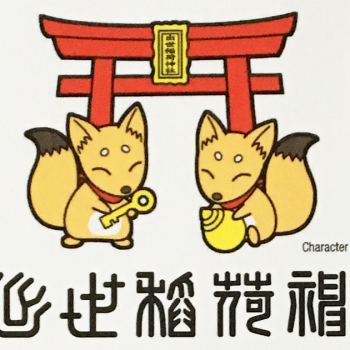I am exceedingly fortunate. My place of work, which is a Japanese organisation, gives us selected Japanese holidays as paid holidays in addition to the UK ones. And one of these holidays is Shunbun no Hi, or the Spring Equinox. I think I am one of the few Pagans in the UK who gets Ostara off without having to request it!
This is thanks to the fact that the Spring Equinox is an important day in Shinto and Buddhism, the two main religions in Japan which are more or less merged with each other. It’s part of a seven-day period called Higan, which is a time for remembering the dead. You can read more about what the Spring Equinox means for the Japanese here.
I practise both Shinto and Neopaganism, so the Spring Equinox is a great opportunity to combine my two paths. I will try to incorporate elements from both paths when I have the day off on March 20th to celebrate Spring’s arrival. I thought I’d make some suggestions here for other Neopagans who would be interested in incorporating some Japanese spiritual elements into their Ostara celebrations.
#1 Remember your ancestors and departed friends
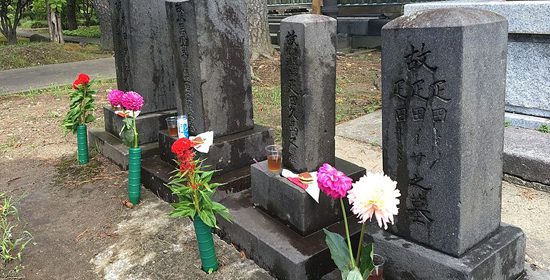
One of the biggest differences between the Spring Equinox in Japanese beliefs and that in Neo paganismis the emphasis on death in the former. For Neopagans, Samhain (and to some extent Lammas and Mabon) is the time for thinking about death. In contrast, Ostara is a celebration of new life.
But I think that death is such a fundamental part of life, and that our ancestors, relatives and friends who have passed over are so important, that it is good to try and remember them at all key moments throughout the Wheel of the Year. I simply try to take a different perspective on death each time. So while Samhain may be a time for witnessing death in action as the leaves fall from the trees and the Sun’s light weakens, Ostara is a time for thinking about the cycle of death and life, and remembering that death is necessary for new life to awaken. I’ve discussed this concept more in my post on The Spring Equinox And Death.
So at Ostara, why not try and make a little time to say hello to your ancestors and departed friends and relatives? You can still use Ostara imagery to do so. You could make them an offering of seasonal flowers and produce, create an ancestral altar using Ostara colours and symbols, light a candle for them (similar to a Christian Advent candle), or offer chocolate eggs if you think they would appreciate this treat. You can also hold prayers and meditation to give your blessings and thanks to the dearly departed, as well as to listen out for any messages they may wish to send you.
#2 Visit your local cemetery
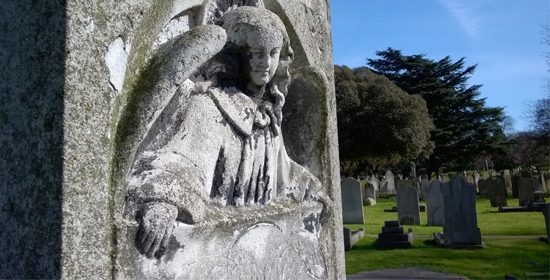
At Higan, Japanese people make trips to the local cemetery to clean and tidy family graves and to make offerings to their departed. I am very lucky in that the vast majority of my loved ones are still very much alive. But those I have lost mostly live quite far away, making regular visits to their graves impractical. I therefore do not currently make visits to the burial places or memorial places of any specific people I know. However, I do make visits to my local cemetery during the period of Higan, even though nobody I know is buried there. I do this in order to honour the long departed who lie under ancient and abandoned gravestones, and to remind the spirits that they have not been forgotten.
I suggest this as an excellent form of commemorating the Spring Equinox for anyone. Make your way for your local cemetery and pay your regards to the many people whose spirits reside there. You may wish to leave an offering or two, but I suggest discretion here. I think that leaving some flowers on the graves of someone unknown is acceptable, but I would not leave food or drink offerings at unknown graves as (in the UK anyway) this is rather uncommon and may be interpreted by others as littering. If you do wish to offer something other than flowers, I suggest doing it by leaving the items somewhere very discrete, like under a tree that isn’t planted on a gravestone. And of course, make sure they are biodegradable.
Another excellent way to honour the dead when visiting the cemetery is to do a little cleaning. Take some gloves, tongs and a rubbish bag with you, and pick up that which is obviously litter. It should be fairly easy to tell what’s litter and what are genuine grave offerings; if in doubt, leave alone.
I personally enjoy coming to my local cemetery in the spring. Where I live, we are blessed with a cemetery that is very beautiful and well-tended, and so plenty of flowers are in bloom at this time. Use your time in the cemetery to appreciate the peaceful, serene atmosphere.
#3 Pray for fertility and prosperity
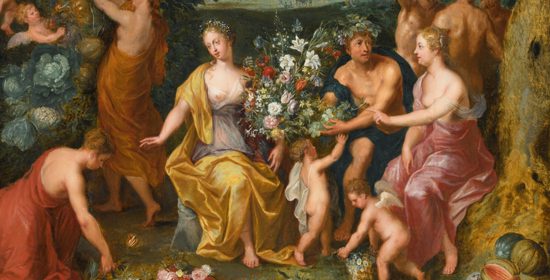
Something that both Japan’s Shunbun no Hi and Neopaganism’s Ostara do have in common is their link with fertility. In Japan, the Spring Equinox is traditionally an important time for farmers to pray to the kami for abundant crops and for blessings upon the year ahead.
Most people reading this are probably not farmers, but you can certainly adapt the spirit of fertility into your rites and prayers. You can pray for the farmers of your own country, for your own garden or allotment, and for the health of the natural world as a whole. You could also ask for blessings upon those who are suffering as a result of famine or natural destruction. Finally, you can pray for your own health and success in business, and the health of children and young people in your life. Celebrating fertility can mean celebrating the health and prosperity of people, after all.
#4 Go flower-gazing
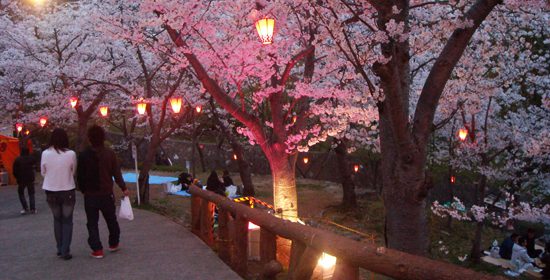
Many people are aware of Japan’s love of cherry blossoms, and the Japanese custom of hanami (“flower gazing”), in which the Japanese hold picnics and parties under cherry trees while they are in spectacular bloom in spring. You may not have cherry trees in your country, or they may not be in bloom yet, but that doesn’t mean you cannot hold your own hanami celebrations! In the UK, lots of different blossoms and flowers are coming into bloom at the moment, including daffodils, crocuses, plum and almond. Gather together among the flowers with your friends, bring along a picnic and enjoy appreciating the beauty of the blossom in each other’s company. And if you’re doing this with Pagan friends, why not hold a small ritual or Spring blessing at the same time?
#5 Celebrate the Divine Feminine and women in your life
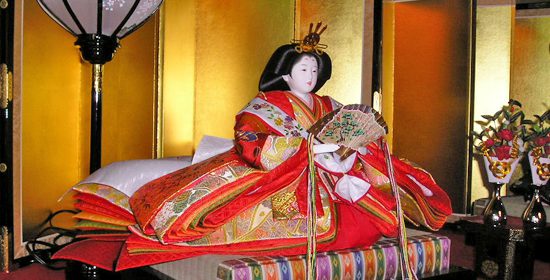
I see Spring as being a “feminine” time of year (while I see Summer as being “masculine”). In Japan, Spring is first commemorated at the Hina Matsuri “doll festival” on March 3rd which celebrates the health and happiness of young women. Then there is International Women’s Day on March 8th which has just passed, Mother’s Day before Easter, and finally Ostara itself (named after a Goddess) is filled with classically feminine imagery, including eggs, hens, flowers and pastel colours. I’ve written more about the feminine nature of Spring celebrations here.
For me, Ostara is a time to honour the Great Goddess in Her many forms, and to pray for the health and happiness of all my female relatives and friends. You can also use this opportunity to pray for all women across the world, especially those suffering from oppression and persecution.
#6 Purify yourself
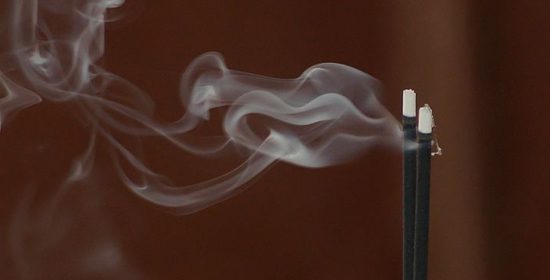
Hina Matsuri celebrations include purification rites, as the festival itself is thought to originate from the practise of using a paper doll, called a hitogata, to rid oneself of impurities (more information here). With Spring being a time of beginnings, you may see it as a good opportunity to hold some form of purification ritual. You could either make hitogata yourself and use these, or you can hold a purification rite from another Pagan path, such as a ritual bath or smudging.
#7 Start a new project

For the Japanese, Spring is a time of new beginnings, with school years , company initiations for new workers and the Financial Year starting in April. You can therefore consider the period before the Spring Equinox as a time to wind up and finish old projects, and the period after as a time for starting new ones. They could be projects related to your work, family, hobbies or your spiritual practises. Use the Spring Equinox to ask the gods and spirits to bless your new endeavours and to give you strength and endurance to see them through.

